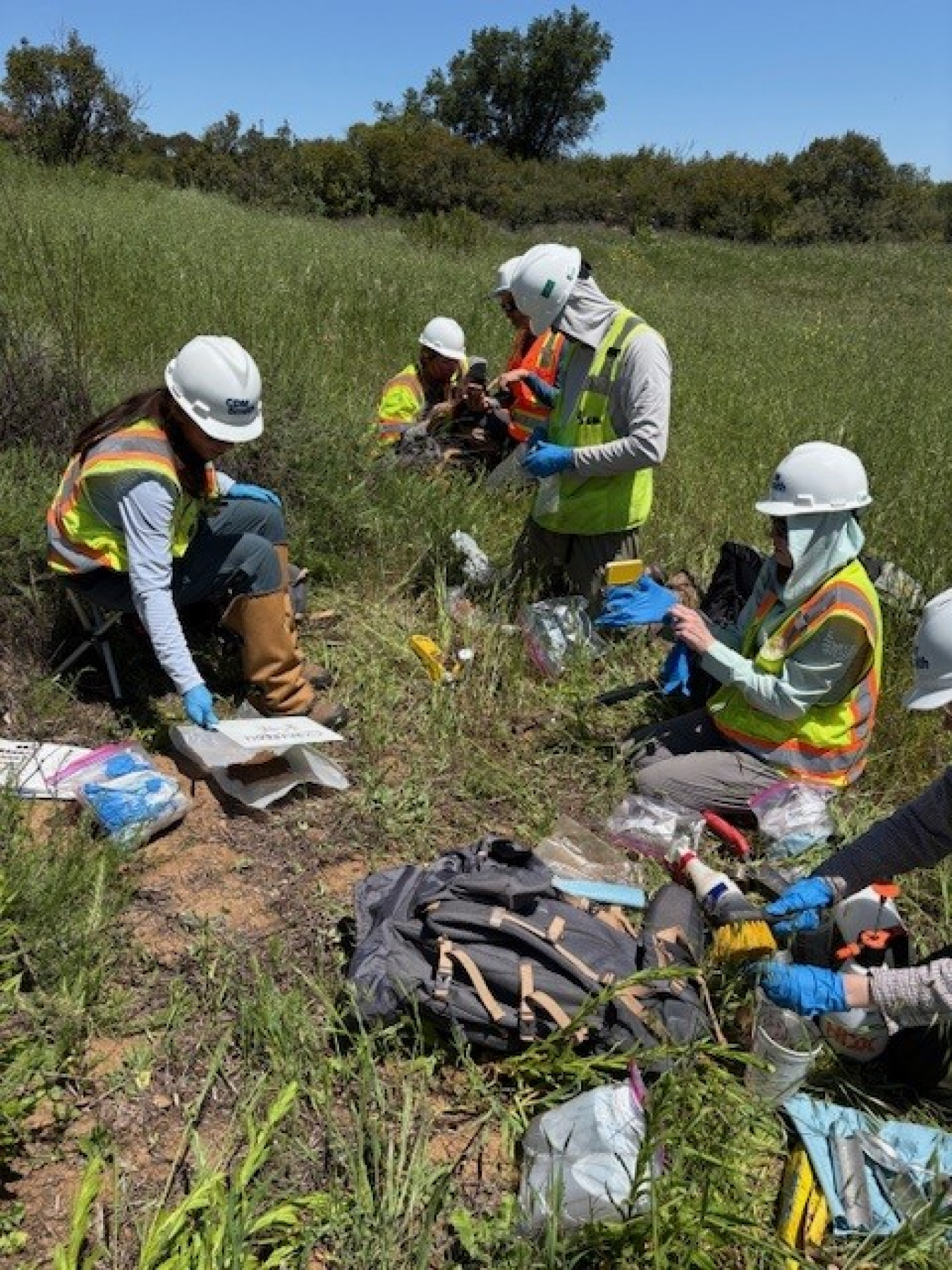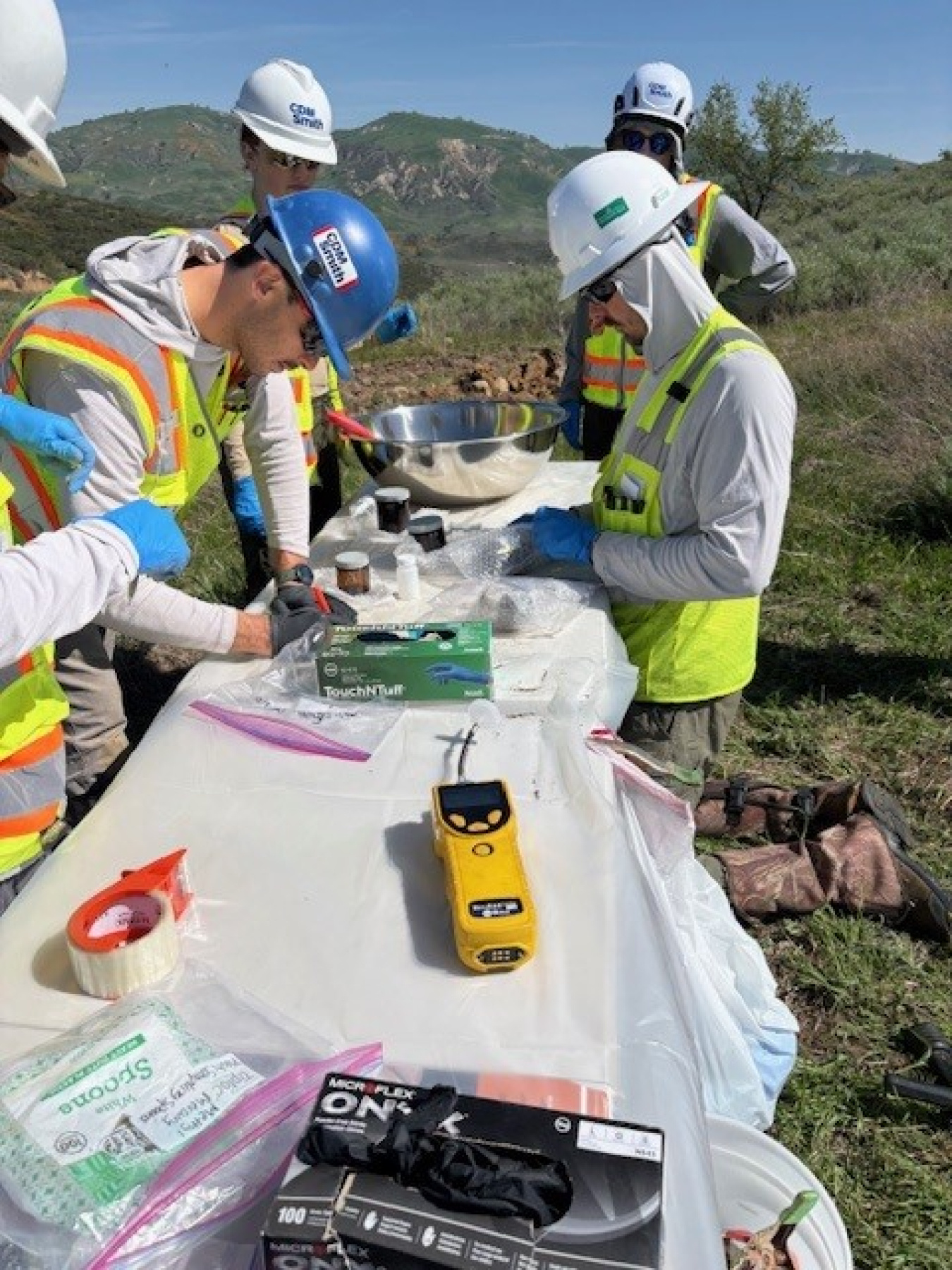The Department of Energy's ETEC team recently completed several soil sampling events at SSFL.
Energy Technology Engineering Center
September 11, 2025
Collecting soil samples is crucial to assessing and understanding the conditions present at the Santa Susana Field Laboratory (SSFL), a portion of which the Department of Energy (DOE) is responsible for remediating.
DOE formerly operated the Energy Technology Engineering Center (ETEC) in Area IV of the 2,850-acre former rocket engine testing and nuclear research facility.
“Sampling is the only way to understand the type of contamination we’re dealing with, how much there is, and where it is,” said Pamela Hartman, DOE’s deputy federal project director for ETEC. “Without sampling, we don’t have the information we need to clean up the site.”
Over the past year, DOE conducted several soil sampling events to collect data for total petroleum hydrocarbons (TPH), method reporting limits (MRL) and backfill sources.
The TPH study was performed to address a data gap for a specific group of chemicals, while the MRL study aimed to understand the contaminant concentrations an instrument can reliably detect and report, Hartman said.

MRL is important because it relates to some of the values determining levels of remediation set in the 2010 Administrative Order on Consent, an agreement signed between DOE and state regulators describing cleanup.
“We’re testing to see what the reasonable levels are that can be reproduced by labs, and we’re also looking at what’s changed since the initial Look Up Table (LUT) values were set,” Hartman said.
In 2013, state regulators defined the initial LUT values for the most frequently observed radionuclides and chemicals at SSFL to determine the level of cleanup needed.

Backfill sampling tests potential sources for material to replace any soil that may be removed during cleanup.
Asked how often soil sampling events occur and how many samples might be collected, Hartman said it depends on the type of data requested and the purpose of the study. Those factors also determine how long a sampling event can take.
Over 5,800 samples were collected for the initial characterization of DOE’s portion of SSFL, Hartman said. During the last year, samples were taken at 30 locations for the TPH study and at six locations for the MRL study.
Read more about soil sampling.
-Contributor: Melissa Simon

